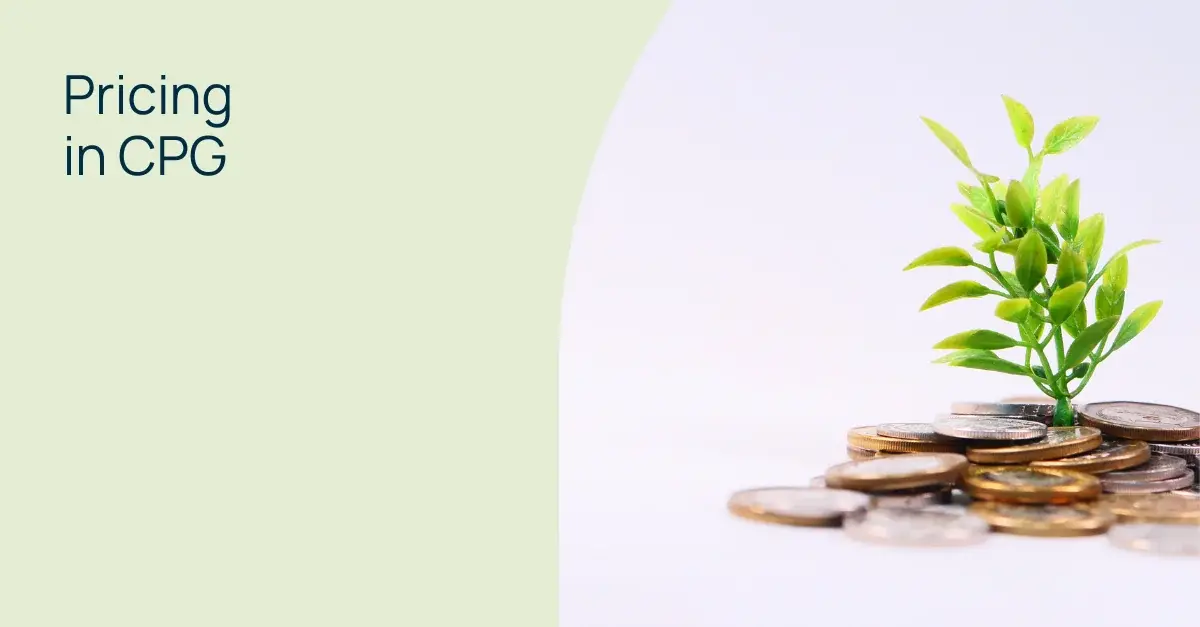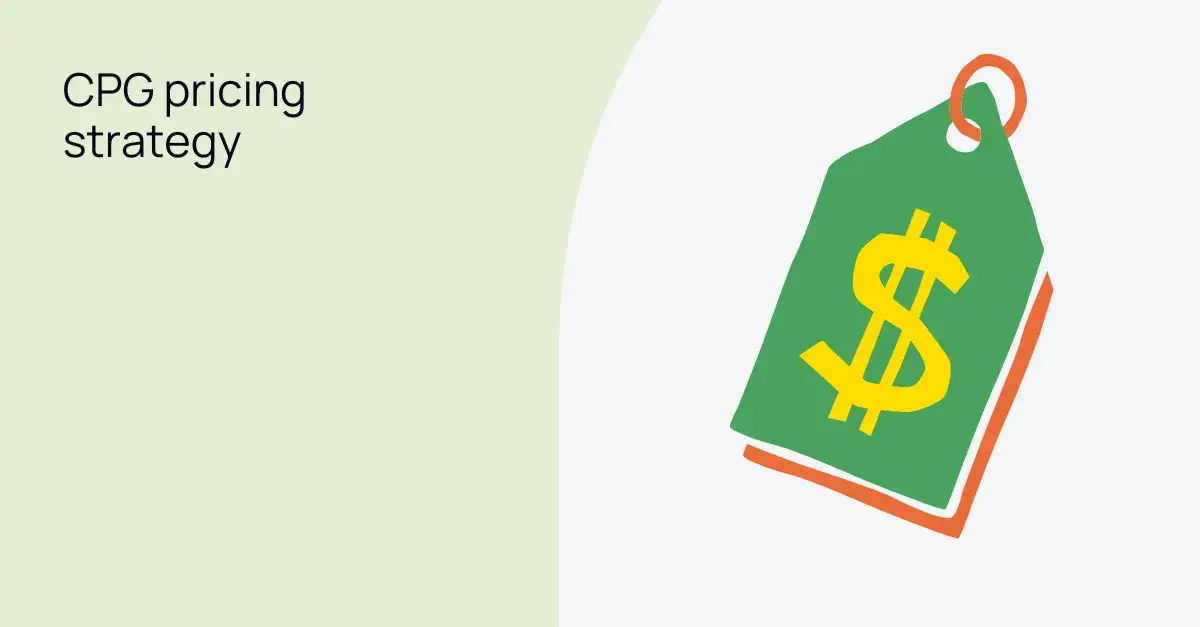.png)
Promotional pricing strategy in CPG: Tactics, trade spend, and smarter planning
In the fast-moving world of consumer-packaged goods (CPG), pricing is more than just a number on a shelf—it’s a strategic lever that shapes consumer behavior, influences retailer relationships, and drives profitability. Among the many pricing approaches available to CPG companies, promotional pricing stands out as one of the most dynamic and impactful.
This article explores promotional pricing in depth: what it is, how it works, and why it matters. We’ll place it within the broader context of optimizing pricing and trade spend in CPG, and examine how modern tools like scenario planning and AI forecasting are transforming how promotions are planned and executed. Whether you're a brand manager, key account manager, or finance lead, understanding promotional pricing as a strategic capability is essential to staying competitive in today’s consumer goods landscape.
What is promotional pricing?

Promotional pricing is a strategy where CPG businesses temporarily reduce prices to spark interest, boost sales, and gain a competitive edge. It’s a psychological tactic that taps into consumers’ desire for bargains and creates a perception of added value. Whether through discounts, coupons, rebates, bundle deals, or buy-one-get-one-free offers, the goal is clear: create urgency and encourage immediate purchase.
Here are some of the most common promotional pricing examples in CPG:
- BOGO (Buy One Get One): Drives trial and volume, especially for new or seasonal products.
- Coupons: Offers targeted discounts, often used to re-engage lapsed buyers or reward loyalty.
- Bundle offers: Encourages multi-product purchases and increases basket size.
- Sales events: Seasonal sales, holiday assortments, Black Friday, and other calendar-driven promotions.
- Limited-time discounts: Creates urgency and boosts short-term sales by leveraging scarcity and time sensitivity.
These tactics are deployed in collaboration with retail partners and are designed to meet specific goals—whether that’s increasing market share, clearing inventory, or supporting a product launch. When executed thoughtfully, promotional pricing can be a powerful tool for both short-term impact and long-term brand growth.
Why promotional pricing strategy matters in CPG
In CPG, pricing is one of the most powerful levers for driving growth, profitability, and market competitiveness. It influences everything from consumer perception to retailer collaboration and supply chain efficiency. While promotional pricing is often viewed as a short-term tactic, its true value emerges when it’s embedded within a broader, strategic pricing and trade spend framework.
However, in the real world, pricing decisions are often fragmented across functions. Key account managers may focus on hitting quarterly volume targets, while finance teams prioritize margin protection. Without alignment, promotional pricing can become reactive and disconnected from broader business goals. For example, a promotion that boosts sales in the short term may inadvertently erode profitability or cannibalize other SKUs if not planned holistically.
Promotions are not isolated events—they are part of a larger pricing ecosystem that includes long-term pricing decisions, trade agreements, and investment planning. When aligned with overall business objectives, promotional pricing helps brands achieve sustainable growth, optimize margins, and strengthen retailer relationships.
Understanding the layers of CPG pricing strategy
 To fully grasp the role of promotional pricing in CPG, it’s important to understand how it fits within a broader pricing architecture. CPG pricing strategy operates across three interconnected layers:
To fully grasp the role of promotional pricing in CPG, it’s important to understand how it fits within a broader pricing architecture. CPG pricing strategy operates across three interconnected layers:
1. Consumer Advised Prices (CAP)—also known as Manufacturer Suggested Retail Prices (MSRP)
While CPGs cannot set retail prices (this is at the sole discretion of the retailer), they can suggest prices for the items they supply. This involves setting recommended prices across channels and product portfolios, guided by production costs, demand trends, competitive positioning, perceived consumer value, and retailer margin expectations.
2. Trade pricing
Refers to the negotiated terms between manufacturers and retailers, including discounts, allowances, and contractual agreements. Trade pricing directly impacts the budget available for promotional activities.
3. Promotional pricing
A tactical layer involving temporary price reductions or value-added offers designed to stimulate demand, clear inventory, or gain market share. Its effectiveness depends on alignment with the underlying CPG and trade pricing strategies.
These layers interact constantly. For example, a deep discount must be evaluated against the base price to ensure margin protection for the CPG. While promotional strategies can influence consumer pricing, the retailer ultimately controls the final shelf price—so any margin impact on the retailer is indirect and cannot be guaranteed by the CPG. Trade agreements that secure premium shelf space may also require promotional support to drive sell-out.
The strategic role of promotional pricing
Promotional pricing is often perceived as a short-term sales booster, but its strategic potential goes far beyond temporary volume spikes. When thoughtfully planned and executed, promotions can serve multiple long-term objectives, for example:
- Driving trial and brand awareness:
Tactics like BOGO and limited-time discounts encourage consumers to try new products, helping brands expand reach and build awareness.
- Strengthening retailer relationships:
Well-timed promotions support retailer calendars, secure better shelf placement, and foster collaborative planning. Promotions that deliver mutual value build trust and long-term partnerships.
- Managing inventory and shelf space:
Promotions help clear excess inventory, make room for new launches, and maintain shelf presence during slower seasons. They also support seasonal assortment strategies.
Best practices for strategic promotions
To maximize impact, promotional pricing should be treated as part of the annual investment strategy—not as ad hoc spending. Consider these best practices:
- Set clear goals: Define success—volume uplift, promotion ROI, retailer engagement, or brand penetration.
- Plan for win-win outcomes, not just ‘counterparts’: Leverage data to negotiate promotions that benefit both manufacturer and retailer.
- Measure ROI: Track Net Sales Value (NSV), Gross Profit (GP), and promotional effectiveness to ensure financial discipline and continuous improvement.
Trade spend strategy: Connecting promotions to revenue and profitability objectives
Promotional pricing doesn’t operate in a vacuum—it’s deeply intertwined with a company’s trade spend strategy, which governs how funds are allocated to support retail execution, drive volume, and secure shelf space. Trade spend is often the second-largest cost item for CPG companies after the cost of goods sold, making its management critical to financial performance.
Visibility and planning
Promotions must be planned with full visibility into retailer margin potential, portfolio pricing, and profitability. A deep discount may drive volume but erode CPG margins if not carefully balanced with base pricing, operational costs, and retailer terms to ensure the overall promotion is financially sustainable.
Yet in practice, this balance is often overlooked. Key account managers, under pressure to hit sales targets and maximize incentives, may be tempted to negotiate promotions with a narrow focus on volume uplift alone. This can lead to poorly structured deals that prioritize short-term wins over long-term profitability. For example, agreeing to deep discounts without assessing CPG margin impact or promotional ROI can result in significant financial leakage.
Risks of poorly managed promotions
Frequent discounts can condition consumers to expect lower prices, turning loyal buyers into bargain hunters. Misaligned promotions can cannibalize other SKUs, disrupt supply chains, and strain retailer relationships. And when promotional decisions are made in isolation—without cross-functional input from finance or revenue growth management—brands risk undermining their own strategic goals.
Interdependencies with trade spend
Decisions like securing prime shelf space through a contractual fee impact the budget and effectiveness of promotional efforts. Conversely, successful promotions can justify higher trade investments by demonstrating higher product rotation and consumer engagement. But again, this requires a holistic view—one that balances the account manager’s sales objectives with the company’s profitability targets.
High promotional pressure categories
Some categories, like detergents or mascara, face extremely high promotional pressure. Promotions occur so frequently that consumers have come to expect them—and often time their purchases accordingly. In these cases, traditional metrics like uplift or ROI may lose relevance. Instead, the promotional mechanism (e.g., BOGO vs. bundle) and depth of discount become key levers to maintain effectiveness and competitiveness.
Understanding these dynamics—and resisting the temptation to chase volume at any cost—is essential for building a promotional pricing strategy that delivers both commercial impact and financial discipline.
Improving your promotional pricing strategy with Visualfabriq
 As promotional pricing becomes more complex and data-driven, CPG companies need tools that go beyond spreadsheets and gut instinct. Visualfabriq empowers teams to plan, execute, and evaluate promotional strategies with precision.
As promotional pricing becomes more complex and data-driven, CPG companies need tools that go beyond spreadsheets and gut instinct. Visualfabriq empowers teams to plan, execute, and evaluate promotional strategies with precision.
Scenario planning
Users can build and compare multiple promotional scenarios—testing different consumer mechanisms, retailer compensation methods, and investment levels. This helps align promotional decisions with financial goals and retailer expectations.
AI forecasting
Visualfabriq’s AI generates predictions for ex-factory and in-market volumes, enabling accurate estimates of NSV, GP, and ROI. By integrating promotional calendars, seasonality, and historical performance, the AI enhances demand planning and reduces guesswork.
Performance visibility
Real-time dashboards provide granular insights into promotion performance at SKU, account, or portfolio level. Teams can track profitability, retailer margins, and promotional effectiveness, enabling faster course correction and smarter investment decisions.
With these capabilities, Visualfabriq transforms promotional pricing from a tactical lever into a strategic engine for growth, margin optimization, and retailer collaboration.
Promotional pricing: A strategic capability
Promotional pricing is no longer just a reactive tool—it’s a strategic capability that can shape brand trajectory, strengthen retailer partnerships, and drive sustainable growth. When integrated thoughtfully into a broader pricing and trade spend strategy, promotions become a lever for long-term value creation.
To unlock this potential, CPG teams must:
- Choose the right tactics for the right occasions
- Align promotions with trade spend strategy
- Leverage tools like Visualfabriq for smarter, data-driven decisions
By treating promotional pricing as a strategic discipline—supported by the right technology and insights—CPG companies can move beyond reactive discounting and toward smarter, more profitable growth.
Ready to take your pricing and promotion strategies to the next level?
Explore our whitepaper ‘The CPG executive’s guide to advanced TPx’ or book a demo to see how smarter planning can transform your trade investments.

.png?width=1200&height=300&name=The%20CPG%20Executive%E2%80%99s%20Guide%20to%20Advanced%20TPx%20(5).png)


.png)